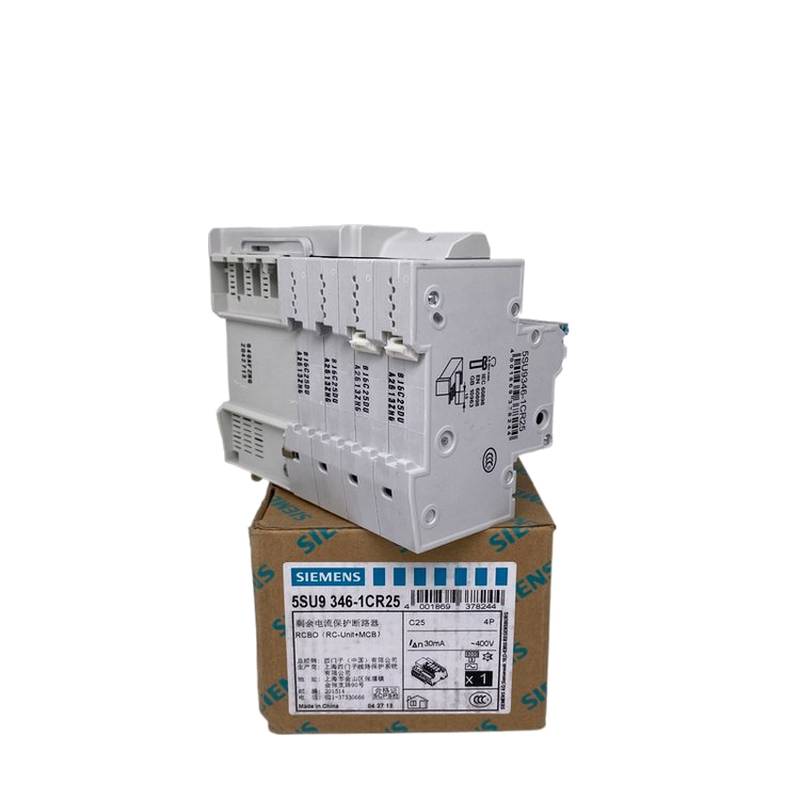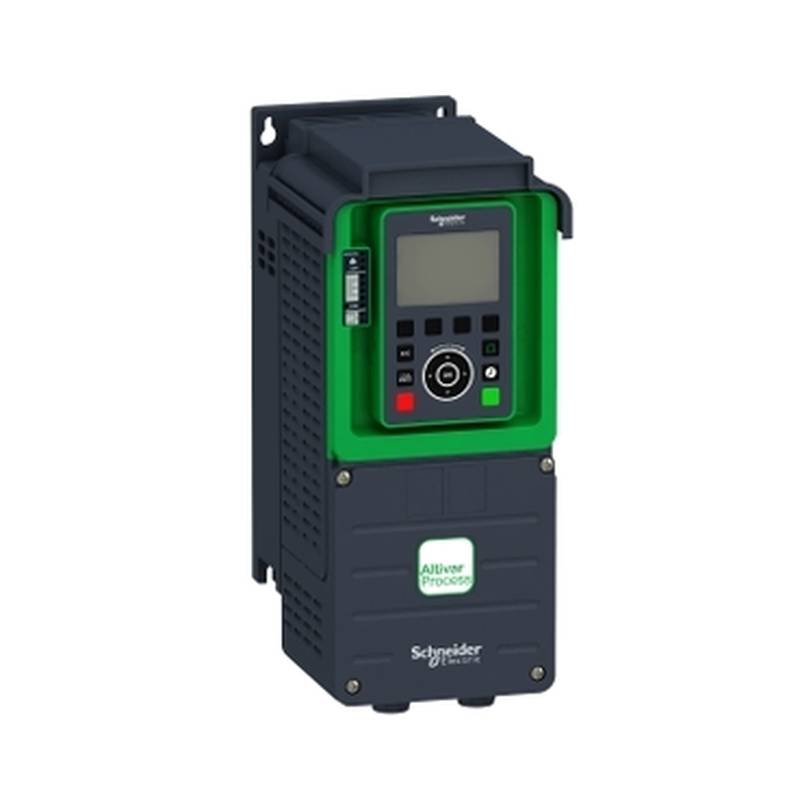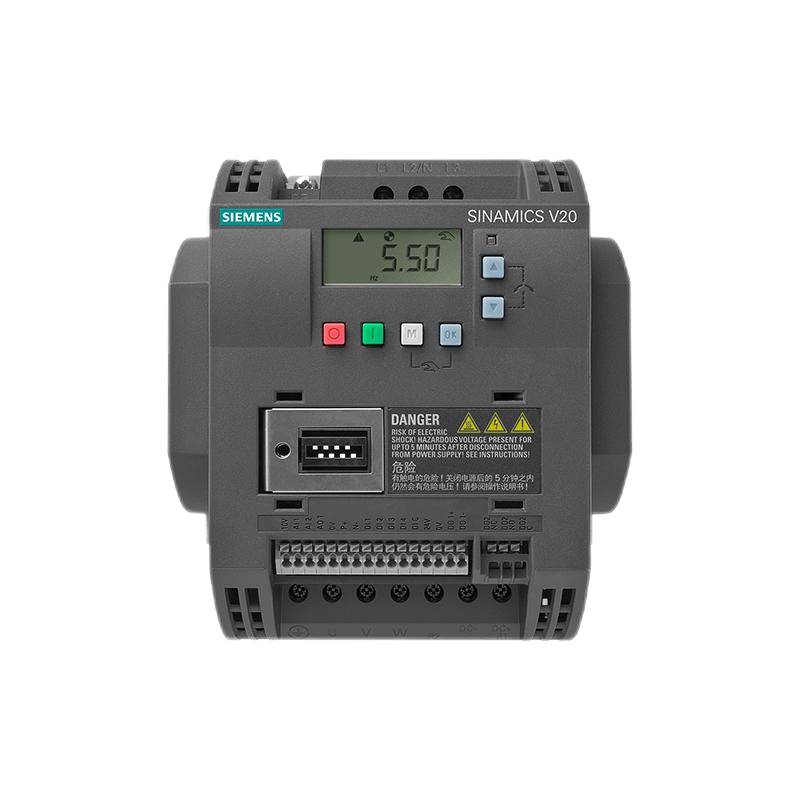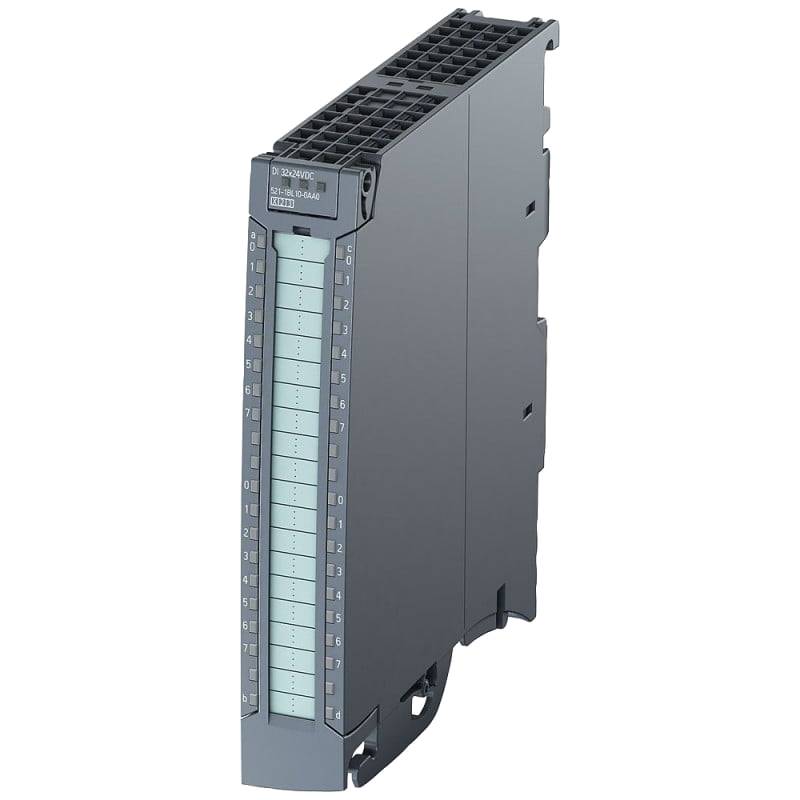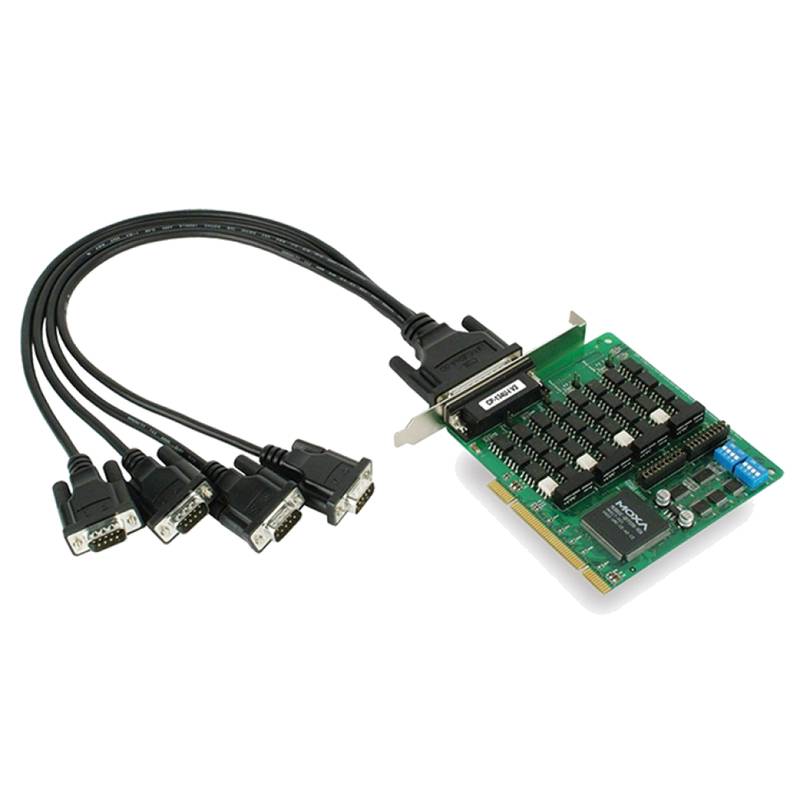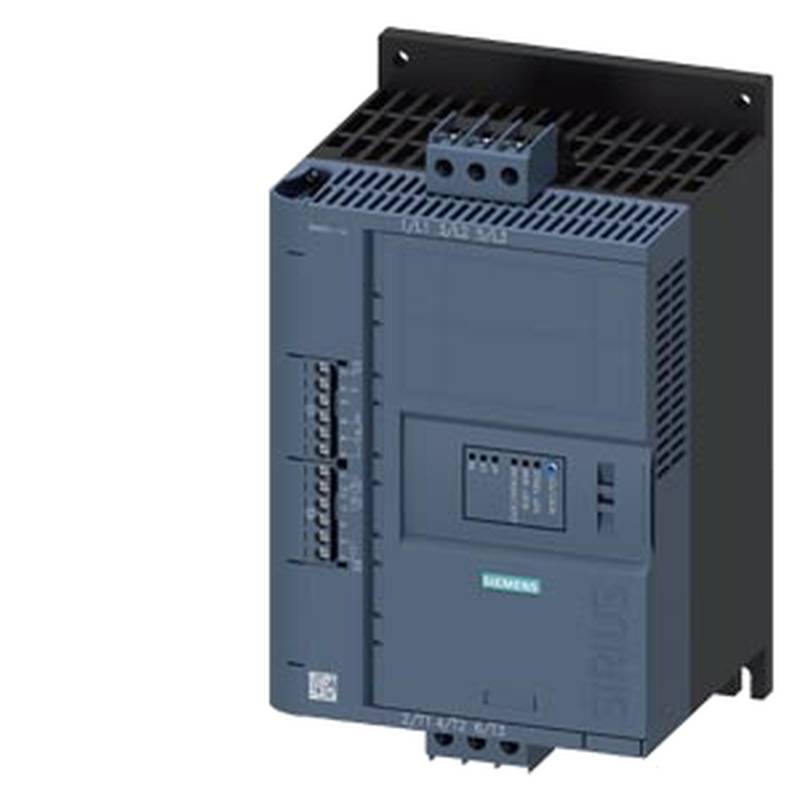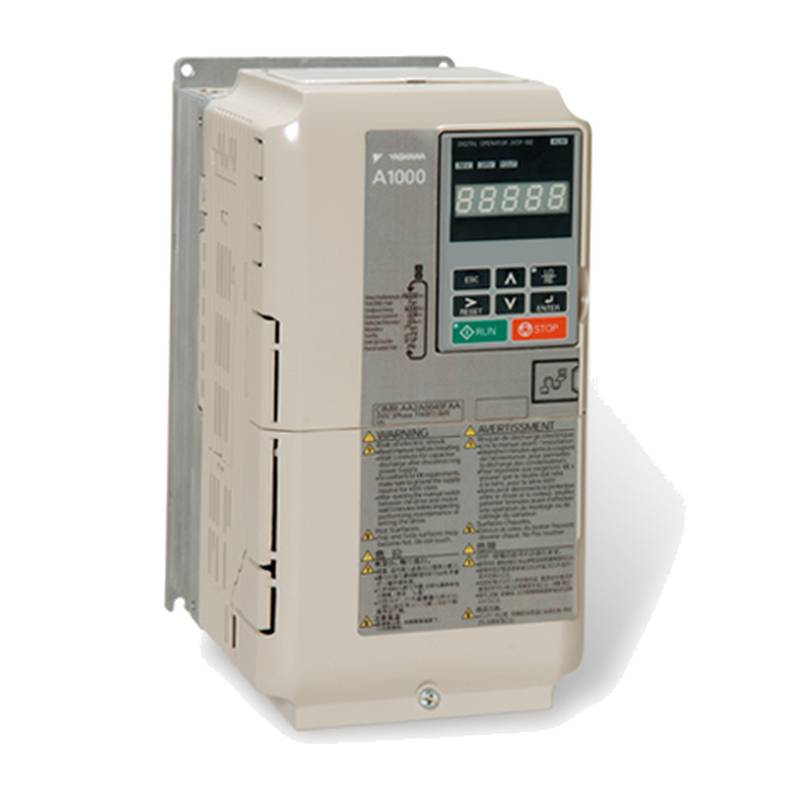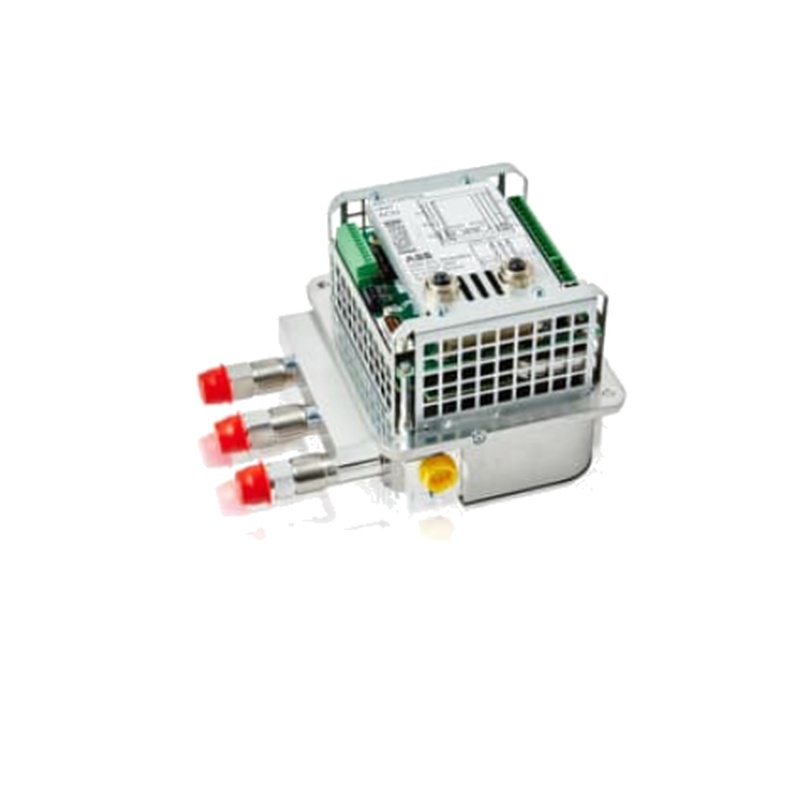
The Siemens 5SU9346-1CN10 is a cost-effective 10A, 30mA, 4-pole Residual Current Circuit Breaker with Overcurrent Protection (RCBO), designed for reliable protection against electric shock, overcurrents, and short circuits in industrial and commercial electrical installations. Its core advantages lie in its integrated protection, space-saving design, and Siemens' renowned quality and reliability. This RCBO offers a tripping current of 30mA, ideal for safeguarding personnel, and a rated current of 10A, suitable for protecting circuits with moderate loads. The C-curve tripping characteristic ensures effective protection against overloads and short circuits without nuisance tripping under normal operating conditions.
Product Specifications
| Feature | Specification |
| :----------------------- | :---------------------------- |
| Product Type | RCBO (Residual Current Circuit Breaker with Overcurrent Protection) |
| Manufacturer | Siemens |
| Model Number | 5SU9346-1CN10 |
| Rated Current (In) | 10A |
| Tripping Sensitivity (IΔn) | 30mA |
| Number of Poles | 4 |
| Tripping Characteristic | C |
| Rated Voltage (Ue) | 400V AC |
| Breaking Capacity (Icn) | 6kA |
| Frequency | 50/60 Hz |
| Operating Temperature | -25°C to +45°C |
| Protection Class | IP20 |
| Mounting | DIN rail |
Core Features & Market Positioning
The Siemens 5SU9346-1CN10 distinguishes itself in the market through its robust integration of residual current and overcurrent protection within a single, compact unit. This eliminates the need for separate devices, reducing installation complexity and panel space. Its economical design does not compromise on performance or safety, positioning it as a highly competitive solution for cost-conscious projects that still demand the assurance of Siemens' engineering excellence. The 4-pole configuration ensures complete isolation of all live conductors, including the neutral, which is critical for many industrial applications, particularly those involving three-phase systems. This comprehensive protection scheme is vital for preventing electrical hazards and ensuring operational continuity.
Key Application Scenarios
This Siemens RCBO is extensively utilized in industrial control panels, distribution boards, and machine protection systems. It is particularly well-suited for protecting circuits in manufacturing facilities, workshops, and commercial buildings where reliable protection against earth faults, overloads, and short circuits is paramount. Common applications include safeguarding motors, pumps, lighting circuits, and control equipment that require a 10A rating and sensitive 30mA residual current detection for enhanced personnel safety. Its use in three-phase systems is also a significant application, providing balanced protection across all phases.
Practical System Integration Guidance
Integrating the Siemens 5SU9346-1CN10 into existing or new electrical systems is straightforward due to its standard DIN rail mounting and clear terminal designations. For a 4-pole installation, ensure that all four terminals (L1, L2, L3, N) are connected to the respective phase and neutral conductors of the protected circuit. The incoming power supply should connect to the upper terminals, and the outgoing load connections to the lower terminals. Proper grounding of the enclosure and the protected equipment is also essential for effective fault detection and safety. Adhering to local electrical codes and standards during installation is critical for safe and compliant operation.
Operation and Risk Mitigation
The Siemens 5SU9346-1CN10 operates by continuously monitoring the balance of current flowing into and out of a protected circuit. If an imbalance occurs, indicating a potential earth leakage fault, the RCBO rapidly trips, interrupting the circuit and preventing electric shock or fire hazards. The overcurrent protection, governed by the C-curve characteristic, activates at fault currents between 5 and 10 times the rated current, providing protection against damaging overloads and short circuits. In case of a fault, the RCBO's toggle will move to the OFF position. To reset, the toggle should be firmly pushed to the OFF position and then back to the ON position. Persistent tripping indicates a persistent fault condition that requires professional investigation.
Scalability & Long-Term Value
While the Siemens 5SU9346-1CN10 is an individual protection device, its value extends through its compatibility with the broader Siemens industrial automation and electrical distribution ecosystem. It seamlessly integrates into standard electrical panels, allowing for straightforward upgrades or expansions of protection levels as system requirements evolve. Its robust construction and adherence to stringent Siemens quality standards ensure a long operational lifespan, minimizing the need for premature replacement and contributing to the overall long-term cost-effectiveness of electrical installations. The inherent reliability minimizes downtime, further enhancing its long-term value proposition.
FAQs
What is the primary function of the Siemens 5SU9346-1CN10 RCBO?
This RCBO provides combined protection against residual currents and overcurrents. It safeguards personnel from electric shock. It also protects electrical equipment from damage due to overloads.
It detects earth faults by monitoring current imbalance. The device trips quickly to prevent hazards. This dual functionality simplifies installations.
The 10A rating and 30mA sensitivity are key specifications. These define its protective capabilities for specific circuit loads.
Can the Siemens 5SU9346-1CN10 be used in a single-phase application?
While designed as a 4-pole device, it can be adapted for specific single-phase applications. However, it is optimized for three-phase systems.
For single-phase, you would typically use only two poles (e.g., L and N). Proper wiring is crucial for safe operation. Ensure all unused poles are safely isolated.
Consulting the product manual or a qualified electrician is recommended. This ensures correct and safe application for your specific needs.
What does the 'C' in the tripping characteristic 'C' signify?
The 'C' designation refers to its tripping curve for overcurrents. It indicates a moderate inrush current capability. This makes it suitable for inductive loads.
Devices with a C-curve trip between 5 to 10 times their rated current. This offers protection against short circuits and overloads. It avoids nuisance tripping from motor start-ups.
This characteristic balances sensitivity with the ability to handle transient surges. It is a common choice for industrial applications.
What is the significance of the 30mA tripping sensitivity?
A 30mA tripping sensitivity is considered the threshold for preventing electric shock to humans. It signifies a highly sensitive device. This level of sensitivity is crucial for personal safety.
When leakage current exceeds 30mA, the RCBO rapidly disconnects the power. This rapid response minimizes the risk of severe injury or electrocution. It is a standard for safety in many regulations.
This makes the 5SU9346-1CN10 ideal for circuits where direct contact with live parts is a possibility. It enhances overall electrical safety significantly.
How does the 4-pole configuration benefit industrial systems?
A 4-pole RCBO includes protection for all three phases and the neutral conductor. This ensures comprehensive safety in three-phase systems. It provides full disconnection of all conductors during a fault.
In three-phase industrial applications, balanced protection is vital. The 4-pole design ensures that each phase and the neutral are monitored independently. This prevents dangerous voltage imbalances.
This configuration offers superior safety and operational reliability. It is particularly important for motors and other three-phase equipment.
What is the breaking capacity of the Siemens 5SU9346-1CN10?
The breaking capacity (Icn) of this RCBO is 6kA. This indicates the maximum fault current it can safely interrupt. It must be greater than the prospective short-circuit current at the installation point.
A 6kA breaking capacity is suitable for many standard industrial and commercial distribution systems. It ensures the device will not be destroyed during a severe short circuit. This guarantees protection for the circuit.
Selecting an RCBO with adequate breaking capacity is a critical safety requirement. It prevents catastrophic failure of the protective device. Always verify against your system's fault current levels.
What type of loads is the Siemens 5SU9346-1CN10 suitable for protecting?
With a 10A rating and C-curve, it is suitable for moderate loads. This includes lighting, heating, and control circuits. It can also protect small motors and pumps.
The C-curve characteristic allows it to handle inrush currents associated with motor starting. This prevents nuisance tripping during normal operation. It offers reliable protection for inductive loads.
It is designed for use in industrial and commercial environments. Always ensure the load current does not exceed the 10A rating.
Does this RCBO offer surge protection?
No, this RCBO (5SU9346-1CN10) does not inherently provide surge protection. Its primary functions are residual current detection and overcurrent protection. Surge protection typically requires separate devices like surge arresters.
To protect sensitive equipment from voltage spikes and transients, you would need to install dedicated surge protection devices. These are often installed upstream or in parallel with the RCBO.
It is important to understand the distinct roles of different protection devices. Combining RCBOs with surge protectors ensures comprehensive electrical system safety.
What is the operating temperature range for this RCBO?
The Siemens 5SU9346-1CN10 is designed to operate reliably within a temperature range of -25°C to +45°C. This wide range ensures performance in various industrial environments. It covers both cold and warm conditions.
Operating the device outside this specified range can affect its performance and lifespan. Extreme temperatures can impact tripping accuracy and internal component integrity. Ensure proper ventilation.
Adhering to the specified operating temperature is crucial for maintaining safety and reliability. It ensures the device functions as intended under typical industrial conditions.
How do I reset the Siemens 5SU9346-1CN10 after a trip?
After a trip, the toggle lever of the RCBO will be in the OFF position. To reset, first ensure the fault condition has been resolved. Firmly push the toggle lever completely to the OFF position.
Then, move the toggle lever back up to the ON position. If the fault persists, the RCBO will trip again immediately. Do not attempt to force it on if it continues to trip.
Persistent tripping indicates an ongoing electrical fault that requires professional diagnosis and repair. Always prioritize safety and consult a qualified electrician if unsure.














